Thingiverse

Method for modeling a CPR Mask Shape by willlazdins37
by Thingiverse
Last crawled date: 3 years ago
Why share an approach to modeling the SHAPE of a CPR type mask using NURBS?
First, the modeling approach using NURBS is flexible in that anyone using the NURBS approach can create customized complex designs for CPR type masks or other assistive emergency response equipment.
1) This approach could be used to model many different CPR types masks
2) A single 3D printer can manufacture hundreds of masks at practically no cost.
3) The model can be printed at any scale from pediatric sizes to adult sizes
4) Can be used to conveniently model different types of animal rescue masks
Disclaimer:
This product describes the design and configuration of a CPR Type Mask. We are sharing this approach to a design process using Non-Uniform Rational B-Splines (NURBS) to model a complex shape. This model is not a medical device. This object has not been tested for use in resuscitation. We are sharing our design method, not suggesting that anyone 3D prints this design or attempt to use the design for resuscitation of anyone or any animal. No Really, We’re Not Kidding About This.
Second: What is CPR?
CardioPulmonary Resuscitation (CPR) is an emergency procedure performed when someone's heart stops beating. Conventional CPR is done by mouth-to-mouth breathing and chest compression.
Third: Why use a CPR mask?
A CPR Mask is an assistive device used to safely give rescue breaths during cardiac arrest or respiratory arrest. The CPR Mask protects the Rescuer from exposure to bodily fluids that may be expelled through the mouth of the CPR Recipient during the CPR process. Patients may expel vomit or blood while receiving chest compressions during the CPR process. A CPR Mask may decrease the transmission of infectious diseases. To use the CPR mask correctly, consider the following steps:
Place the mask over patients nose and mouth with the narrow part over the patient’s nose.
Press mask down on patient’s face creating an airtight seal.
Open the patient’s airway by tilting the patient’s head back and lifting the jaw forward/up.
Perform rescue breaths through the valve.
Fourth: What are NURBS? and why we used them
Most Approaches to 3D Modeling of complex objects use “primitives.” These include spheres, cubes, toroids, planes, and cylinders. Each of these “Primitive” shapes may represent objects with different properties. For example, solids, metaballs, or NURBS. NURBS is a mathematical model of 3D Geometry that can describe a simple 2-D shape to a complex 3-D surface or solid. We used NURBS because of its ability to retain its curvature so precisely due to surfaces being mathematically defined. When manipulating an object using NURBS Modeling, you keep a more organic shape compared to a polynomial surface, which uses planes rather than curves. NURBS modeling allows us to be meticulous and produce the exact shape that we desire.
Fifth: What is PLA and why use this to print an object?
Polylactic Acid (PLA) is a bioplastic derived from corn starch and sugar cane. PLA is cost-effective to produce from the abundance of materials used to create the bioplastic and the ability to produce material with already existing manufacturing equipment. This material is biodegradable (biodegrades in 6-12 months) and would not add to environmental pollutants in countries with restricted healthcare economies.
This idea was created by William Lazdins under the guidence and supervision of Dr. Richard Siderits, for Experimental Pathology
Resources:https://cpr.heart.org/AHAECC/CPRAndECC/AboutCPRFirstAid/WhatIsCPR/UCM_499896_What-is-CPR.jsphttps://www.redcross.org/take-a-class/cprhttps://www.youtube.com/watch?v=pfa59jb8JqUhttps://www.youtube.com/watch?v=U4crkJU-6vAhttps://www.youtube.com/watch?v=ikkbWUniK_4https://www.youtube.com/watch?v=DBQ7TakjX-ohttps://www.creativemechanisms.com/blog/learn-about-polylactic-acid-pla-prototypes
First, the modeling approach using NURBS is flexible in that anyone using the NURBS approach can create customized complex designs for CPR type masks or other assistive emergency response equipment.
1) This approach could be used to model many different CPR types masks
2) A single 3D printer can manufacture hundreds of masks at practically no cost.
3) The model can be printed at any scale from pediatric sizes to adult sizes
4) Can be used to conveniently model different types of animal rescue masks
Disclaimer:
This product describes the design and configuration of a CPR Type Mask. We are sharing this approach to a design process using Non-Uniform Rational B-Splines (NURBS) to model a complex shape. This model is not a medical device. This object has not been tested for use in resuscitation. We are sharing our design method, not suggesting that anyone 3D prints this design or attempt to use the design for resuscitation of anyone or any animal. No Really, We’re Not Kidding About This.
Second: What is CPR?
CardioPulmonary Resuscitation (CPR) is an emergency procedure performed when someone's heart stops beating. Conventional CPR is done by mouth-to-mouth breathing and chest compression.
Third: Why use a CPR mask?
A CPR Mask is an assistive device used to safely give rescue breaths during cardiac arrest or respiratory arrest. The CPR Mask protects the Rescuer from exposure to bodily fluids that may be expelled through the mouth of the CPR Recipient during the CPR process. Patients may expel vomit or blood while receiving chest compressions during the CPR process. A CPR Mask may decrease the transmission of infectious diseases. To use the CPR mask correctly, consider the following steps:
Place the mask over patients nose and mouth with the narrow part over the patient’s nose.
Press mask down on patient’s face creating an airtight seal.
Open the patient’s airway by tilting the patient’s head back and lifting the jaw forward/up.
Perform rescue breaths through the valve.
Fourth: What are NURBS? and why we used them
Most Approaches to 3D Modeling of complex objects use “primitives.” These include spheres, cubes, toroids, planes, and cylinders. Each of these “Primitive” shapes may represent objects with different properties. For example, solids, metaballs, or NURBS. NURBS is a mathematical model of 3D Geometry that can describe a simple 2-D shape to a complex 3-D surface or solid. We used NURBS because of its ability to retain its curvature so precisely due to surfaces being mathematically defined. When manipulating an object using NURBS Modeling, you keep a more organic shape compared to a polynomial surface, which uses planes rather than curves. NURBS modeling allows us to be meticulous and produce the exact shape that we desire.
Fifth: What is PLA and why use this to print an object?
Polylactic Acid (PLA) is a bioplastic derived from corn starch and sugar cane. PLA is cost-effective to produce from the abundance of materials used to create the bioplastic and the ability to produce material with already existing manufacturing equipment. This material is biodegradable (biodegrades in 6-12 months) and would not add to environmental pollutants in countries with restricted healthcare economies.
This idea was created by William Lazdins under the guidence and supervision of Dr. Richard Siderits, for Experimental Pathology
Resources:https://cpr.heart.org/AHAECC/CPRAndECC/AboutCPRFirstAid/WhatIsCPR/UCM_499896_What-is-CPR.jsphttps://www.redcross.org/take-a-class/cprhttps://www.youtube.com/watch?v=pfa59jb8JqUhttps://www.youtube.com/watch?v=U4crkJU-6vAhttps://www.youtube.com/watch?v=ikkbWUniK_4https://www.youtube.com/watch?v=DBQ7TakjX-ohttps://www.creativemechanisms.com/blog/learn-about-polylactic-acid-pla-prototypes
Similar models
thingiverse
free

Lactic acid Molecule by raphnn
...hich later has developed application as biodegradable plastic.
watch the timelapse here and enjoy : https://vimeo.com/119264542
grabcad
free

Bag Valve Mask
...held device commonly used to provide positive pressure ventilation to patients who are not breathing or not breathing adequately.
thingiverse
free
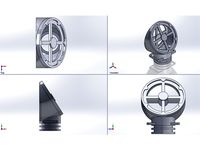
Y Breather Mark 3.14 by TheWorcShop
...for breathing valves.
(we used 3m easi-air inhalation valve id # 70-0700-9197-3
-- ~18-24" elastic band or other strapping
grabcad
free

Ambu_bag (Self-inflating bag)
...to patients who are not breathing or not breathing adequately.
just try to make a model of ambu bag, or say (self-inflating bag)
grabcad
free

MaskSupport
...l separates the mask from the mouth, allowing for easier breathing in situations that breathing with the mouth proves beneficial.
cg_trader
$3

Ambu Bag
...d, thus the dimensions are accurate. balloon bottle air clean container ambu ventillator corona robotis emergengy science medical
thingiverse
free

Coupling for CPR Mask to Honeywell North N Series Filter, P100 by TheWorcShop
... series filter, p100 becoming a breathing device that will lower the risk of contracting diseases when used in the medical field.
cg_trader
$15

Resuscitator Valve mask
...resuscitator valve mask
cg trader
model of a medical resuscitator / valve mask / anesthesia bag.
thingiverse
free

inner mask by imaicom
...he one i saw on tv. made it more beautiful in terms of its shape. i prepared three different types to fit the size of your mouth.
thingiverse
free

Mask from stronghero3d
... and tie to hold the mask on your head.
separate mouth and nose double ventilation breath.
reduce fog on glass when you breath .
Cpr
turbosquid
$1

cpr hudson h-1b steam locomotive
...3d model cpr hudson h-1b steam locomotive for download as obj on turbosquid: 3d models for games, architecture, videos. (1707811)
turbosquid
$10

Superloop mdl delta ligh Cpr Hc 70 Mdl black gold bronza
...elta-ligh cpr hc 70 mdl black gold bronza for download as max on turbosquid: 3d models for games, architecture, videos. (1470792)
3dfindit
free

CPR
...cpr
3dfind.it
catalog: a&t
3dfindit
free

CPR
...cpr
3dfind.it
catalog: a&t
thingiverse
free

Coupling for CPR Mask to Honeywell North N Series Filter, P100 by TheWorcShop
... series filter, p100 becoming a breathing device that will lower the risk of contracting diseases when used in the medical field.
thingiverse
free

Stand for a 28mm (1.1") heat sink for CPR aquafuge 2 by grumblecakes
...nd fits 28mm heat sinks (for custom led lights), print atleast 2. slots for a splash guard as well as light shields on the sides.
free3d
$19
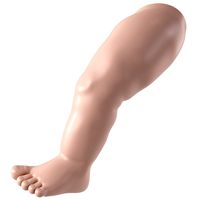
Baby CPR Dummy Leg
... if needed.
also check out our other models, just click on our user name to see complete gallery.
3d_molier international 2019
artstation
$20

Surgeon performing CPR 120
...rom scratch. we transform your idea into high quality animation-ready 3d model with pbr texture set. so stay tuned and follow us!
thingiverse
free

R2-D2 Dome Motor Bracket for the Pololu 30:1 Metal Gearmotor 37Dx68L mm with 64 CPR Encoder by hammer32
...can be found here:https://www.patreon.com/mrbaddeley
i'll include pictures once printed, it's in the print queue for now.
Method
turbosquid
$29
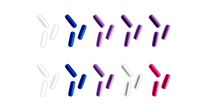
Grams Method
... available on turbo squid, the world's leading provider of digital 3d models for visualization, films, television, and games.
turbosquid
$30
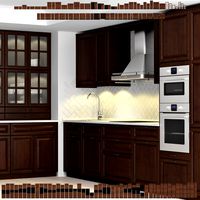
Kitchen Ikea Method Dalarna
... available on turbo squid, the world's leading provider of digital 3d models for visualization, films, television, and games.
turbosquid
$60
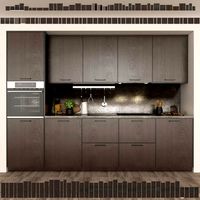
Kitchen Ikea Method Ekestad brown.
...itchen ikea method ekestad brown. for download as max and fbx on turbosquid: 3d models for games, architecture, videos. (1260046)
3d_export
$5
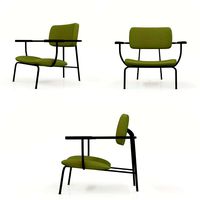
method lounge chair
...t for a smooth, natural look. dimensions: 31 "(w) x 33" (l) x 28 "(h); seat height 20 inches. designed in the usa.
3d_export
$15

Helicopter Pack EC130-H130 Air Methods Livery
...ck asset produced, created and rendered by cgamp - it is prohibited to resell or to modify and resell this stock asset in any way
3d_export
$10

neo classic kitchen 13
...neo classic kitchen 13 3dexport used new method in...
3d_export
$5

modern light table
...3dexport a modern light table with a simple manufacturing method ...
3d_export
free

sword
...sword 3dexport sword i made to test a method is a little crooked, but i hope it will...
3ddd
$1

meteorite
...3ds max 2011,2014 vray material, have also vraydisplacement map method decoration...
3d_export
$10
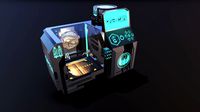
3D printer Oasis
...to create a stand for the egyptian eye, a method was used to reduce the number of viewport levels...
Mask
turbosquid
$1

Dust Mask Medical Mask Face Mask Surgical Mask
...k face mask surgical mask for download as blend, fbx, and obj on turbosquid: 3d models for games, architecture, videos. (1533329)
3d_export
$5
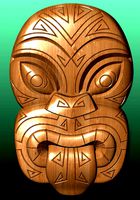
Mask
...mask
3dexport
african mask
turbosquid
$2
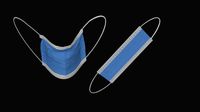
Riggged Surgical mask face mask dust mask medical mask
...sk dust mask medical mask for download as blend, fbx, and obj on turbosquid: 3d models for games, architecture, videos. (1536257)
archibase_planet
free

Mask
...mask
archibase planet
mask sculpture decor
mask - 3d model for interior 3d visualization.
3d_export
$19
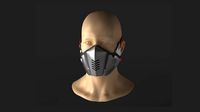
masks tech metal masks wearable futuristic masks
... tech metal masks wearable futuristic masks
3dexport
masks, tech metal masks, wearable, futuristic masks zip contain fbx obj max
archibase_planet
free
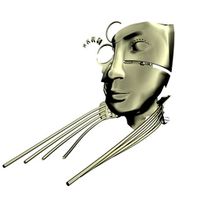
Mask
...mask
archibase planet
mask sculpture decor
mask-decor - 3d model for interior 3d visualization.
archibase_planet
free
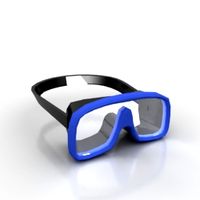
Mask
...mask
archibase planet
mask
swimming mask - 3d model (*.gsm+*.3ds) for interior 3d visualization.
archibase_planet
free

Mask
...mask
archibase planet
picturesque element mask
mask n050608 - 3d model (*.gsm+*.3ds) for interior 3d visualization.
archibase_planet
free
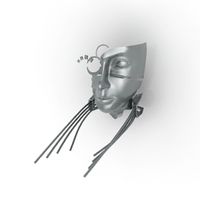
Mask
...mask
archibase planet
mask picturesque element
mask n230708 - 3d model (*.gsm+*.3ds) for interior 3d visualization.
archibase_planet
free
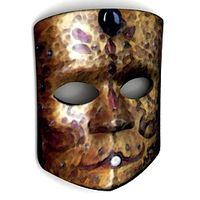
Mask
...mask
archibase planet
mask ornament decoration
mask decor n240211 - 3d model (*.gsm+*.3ds) for interior 3d visualization.
Shape
archibase_planet
free
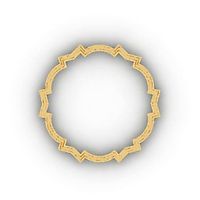
Shape
...shape
archibase planet
form shape
decor shape n070707 - 3d model for interior 3d visualization.
3d_export
$7

shaped ball
...shaped ball
3dexport
shaped ball
3ddd
$1
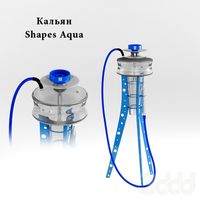
Shapes Aqua
...shapes aqua
3ddd
кальян
кальян shapes aqua
высота кальяна: 70 см.
производитель: shapes
3ddd
$1
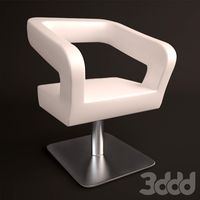
Кресло Shape
...кресло shape
3ddd
tonon
кресло shape итальянской фирмы tonon
размер, см.: 73х61х63.
3d_ocean
$9
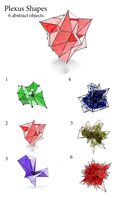
6 Plexus Shapes
...us shape green points : 30397 polygons : 26626 plexus shape violet points : 28734 polygons : 25136 liquid shape 1 points : 454...
3ddd
$1
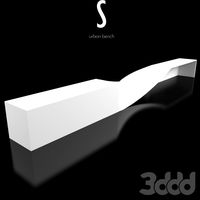
Twist Shape
...twist shape
3ddd
скамья
уникальный и стильный скамья с twist shape в середине - s городской скамьи
archive3d
free
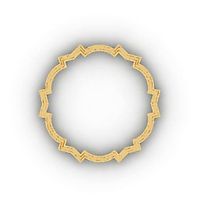
Shape 3D Model
...pe 3d model
archive3d
form shape
decor shape n070707 - 3d model for interior 3d visualization.
3d_export
$5

bolted shape ring
...bolted shape ring
3dexport
bolted shape ring
3d_export
$5
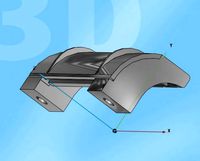
shape door knob
...shape door knob
3dexport
shape door knob
turbosquid
$13

pear shape
...bosquid
royalty free 3d model pear shape for download as stl on turbosquid: 3d models for games, architecture, videos. (1278323)
